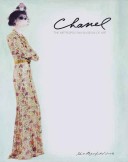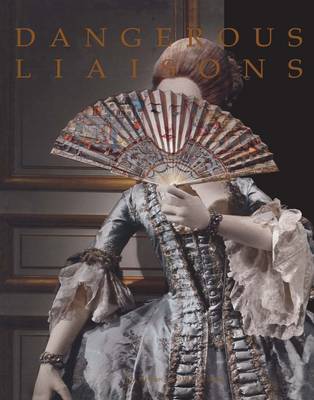Metropolitan Museum of Art Publications
2 total works
This splendid book examines the legacy of Gabrielle "Coco" Chanel, one of the twentieth century's great icons of style. While Chanel mythologized her glamorous life through relentless self-invention, the bare facts of her biography are no less worthy than her legend: born of a poor family in the provinces and raised in a convent, she was an entertainer and the mistress of men of impeccable social standing, and she began her career not as a dressmaker but as a milliner. Chanel's enduring influence is necessarily based on the long shadow cast over fashion by her maison couture. Chanel examines the history of the House of Chanel both thematically and chronologically, introducing ideas and elements of biography as they were expressed in her collections. Period examples are juxtaposed with the work of Karl Lagerfeld, who, beginning in 1983, just over 10 years after Chanel's death, reinvented and revolutionized the House's identity.
It is in Lagerfeld's masterful and often irreverent interpretations of Chanel's work, as well as his mixing of influences from high and low culture, that the historic importance of Chanel and the resonance of her image as the independent, elegant modern woman are both defined and reasserted for the contemporary world. This book accompanies an exhibition scheduled to open at the Metropolitan Museum of Art, May 5-August 7, 2005.
It is in Lagerfeld's masterful and often irreverent interpretations of Chanel's work, as well as his mixing of influences from high and low culture, that the historic importance of Chanel and the resonance of her image as the independent, elegant modern woman are both defined and reasserted for the contemporary world. This book accompanies an exhibition scheduled to open at the Metropolitan Museum of Art, May 5-August 7, 2005.
During the reigns of Louis XV (1723-74) and Louis XVI (1774-92) fashion and furniture merged ideals of beauty and pleasure through their forms and embellishments. With their fragile surfaces and delicate proportions, tables, chairs, and other pieces of furniture enhanced the elite's indulgence in leisurely pursuits, fostering highly complex standards of etiquette and performance. Men and women restated the splendor of the Rococo and Neoclassical interiors of the period in their opulent costumes. For the eighteenth-century libertine and femme du monde, a refined elegance and delicate voluptuousness infused their world with a mood of amorous delight.
Dangerous Liaisons takes its theme from this era, when trifling in love propelled the energies of elite men and women, providing almost daily stimulating encounters, and when, as has been written, "morality lost but society gained." In Choderlos de Laclos's novel of the same name, Ceacile, a young girl, is praised by her tutor in the worldly arts: "She is really delightful! She has neither character nor principles ... everything about her indicates the keenest sensations." Valmont, her seducer, notes the following morning, "Nothing could have been more amusing." Valmont has won a game in the contest of lovemaking.
The beautifully photographed and handsomely reproduced images on the following pages bring these amorous adventures to life. The vignettes, staged for the widely praised exhibition "Dangerous Liaisons: Fashion and Furniture in the Eighteenth Century," held at The Metropolitan Museum of Art in 2004, feature eighteenth-century costumes in the Museum's spectacular French period rooms, The Wrightsman Galleries. The artfully composed scenes include: a woman sitting for her portrait while her husband flirts with her friend; a man being granted an audience with a woman in a peignoir who is having her hair dressed; a vendor embracing the wife of an old man, his back turned, examining a table for sale; a girl receiving more than a harp lesson from her teacher, while her oblivious chaperone reads an erotic novel; a woman giving up her garter as a memento of a very private dinner. The entertaining and knowledgeable texts set the scenes perfectly. [This book was originally published in 2006 and has gone out of print. This edition is a print-on-demand version of the original book.]
Dangerous Liaisons takes its theme from this era, when trifling in love propelled the energies of elite men and women, providing almost daily stimulating encounters, and when, as has been written, "morality lost but society gained." In Choderlos de Laclos's novel of the same name, Ceacile, a young girl, is praised by her tutor in the worldly arts: "She is really delightful! She has neither character nor principles ... everything about her indicates the keenest sensations." Valmont, her seducer, notes the following morning, "Nothing could have been more amusing." Valmont has won a game in the contest of lovemaking.
The beautifully photographed and handsomely reproduced images on the following pages bring these amorous adventures to life. The vignettes, staged for the widely praised exhibition "Dangerous Liaisons: Fashion and Furniture in the Eighteenth Century," held at The Metropolitan Museum of Art in 2004, feature eighteenth-century costumes in the Museum's spectacular French period rooms, The Wrightsman Galleries. The artfully composed scenes include: a woman sitting for her portrait while her husband flirts with her friend; a man being granted an audience with a woman in a peignoir who is having her hair dressed; a vendor embracing the wife of an old man, his back turned, examining a table for sale; a girl receiving more than a harp lesson from her teacher, while her oblivious chaperone reads an erotic novel; a woman giving up her garter as a memento of a very private dinner. The entertaining and knowledgeable texts set the scenes perfectly. [This book was originally published in 2006 and has gone out of print. This edition is a print-on-demand version of the original book.]

